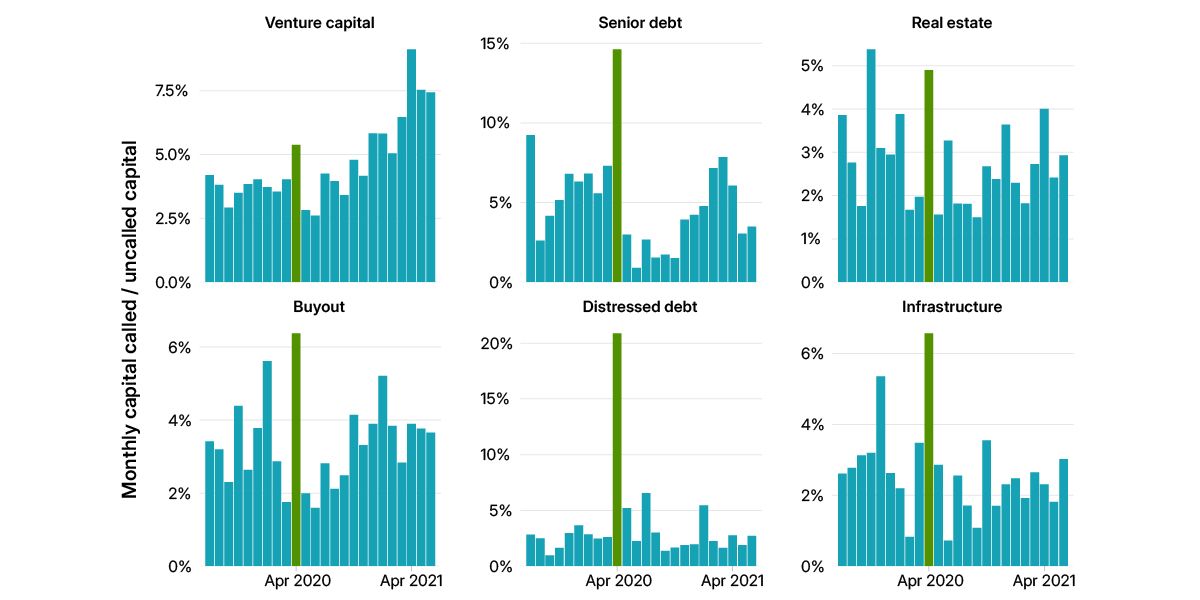An Inconvenient Call: Capital Calls During a Crisis
A public-market downturn coinciding with large private-market capital calls could force asset owners to liquidate assets at the worst possible time. Fortunately, capital calls tend to be highly correlated with distributions, which are typically depressed in downturns, dampening the liquidity requirements of mature private-capital portfolios. Unfortunately, at the onset of severe market shocks that correlation can break down, as illustrated by the spike in capital calls in March 2020.
At the outset of the COVID-19 crisis globally, capital calls across several asset classes doubled — and even quintupled in the case of distressed debt — relative to the preceding months. Reasons for the dramatic increase in contributions varied by asset class.
Nervous lenders and distress
Senior-debt funds, for example, often used subscription lines of credit, and many funds employed significant leverage.1 Nervous lenders (particularly since there was a coincident spike in leveraged-loan spreads) pressured funds to deleverage by aggressively calling capital from limited partners (LPs).
Meanwhile, distressed-debt funds (in aggregate) called down an unprecedented 20% of uncalled capital in the 30 days starting March 16, 2020, scooping up quality assets trading at distressed prices.
Buyout funds similarly paid down sub-line balances but also propped up some of their portfolio companies — often themselves significantly levered — with a burst of capital calls. For real estate and infrastructure, there was an uptick in calls though the effect was more muted.
In the current environment, LPs need to be aware of the threat of sudden, albeit brief, calls on their capital.
Capital calls spiked on COVID-19 shock

Monthly capital calls as a fraction of the uncalled capital at the start of the month. In this chart, months run from day 16 of the month to day 15 of the next. The highlighted bar covers the equity market’s nadir (as tracked by the MSCI ACWI Index), on March 23, 2020. Data for global closed-end funds from the MSCI Private Capital Universe as of Q3 2024.
Subscribe todayto have insights delivered to your inbox.
Private-Equity Distributions in Limbo: How Low Can They Go?
Investors in private-equity funds already faced depressed distribution rates before the recent public-market turmoil. We chart how public-market returns and downturns in buyout and venture-capital distributions have played out historically.
1 Furthermore, the use of sub lines since increased for some asset classes. See The Rise (and Rise) of Sub Lines in Private Capital.
The content of this page is for informational purposes only and is intended for institutional professionals with the analytical resources and tools necessary to interpret any performance information. Nothing herein is intended to recommend any product, tool or service. For all references to laws, rules or regulations, please note that the information is provided “as is” and does not constitute legal advice or any binding interpretation. Any approach to comply with regulatory or policy initiatives should be discussed with your own legal counsel and/or the relevant competent authority, as needed.
